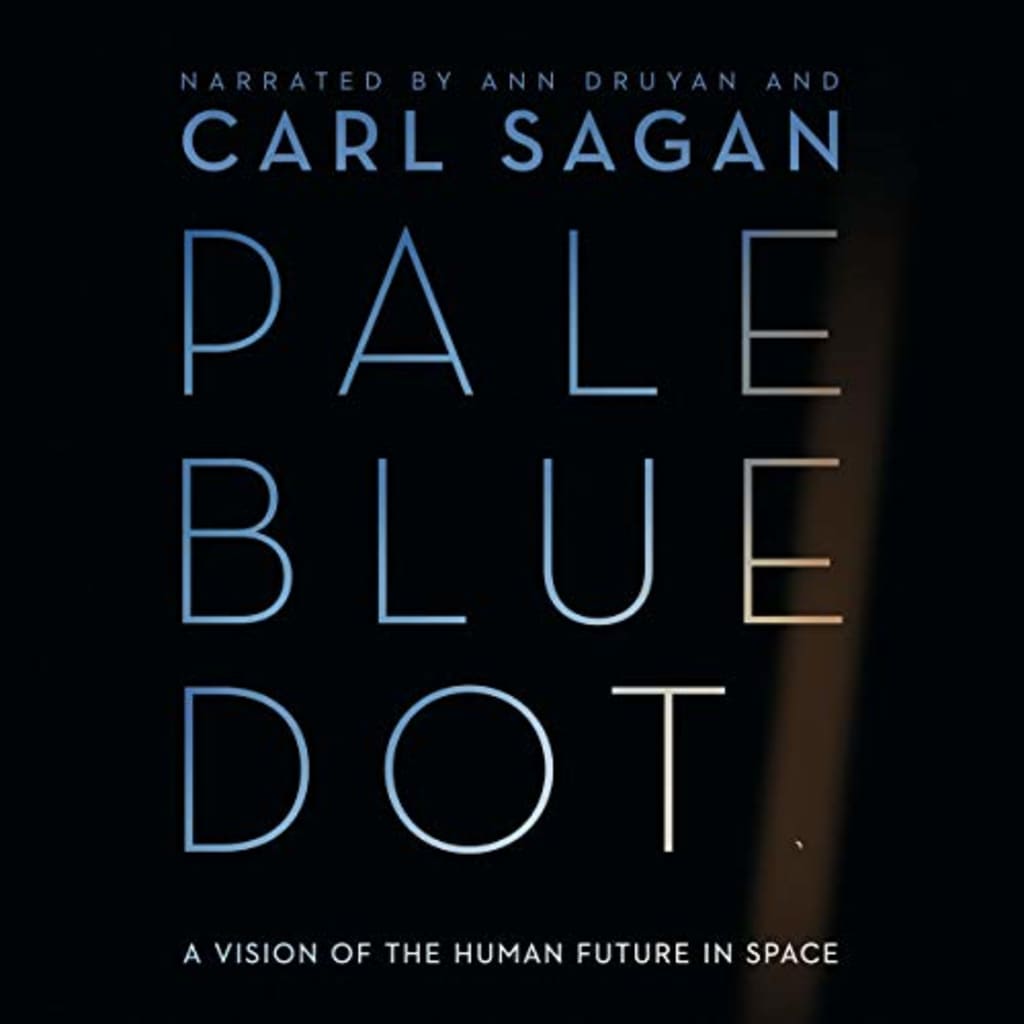
In the introduction, Carl Sagan sets the stage for his exploration of humanity's place in the cosmos by reflecting on the famous "Pale Blue Dot" photograph of Earth taken by the Voyager 1 spacecraft in 1990. He marvels at the profound perspective this image offers, portraying Earth as a tiny speck suspended in the vastness of space. Sagan emphasizes the need for humanity to recognize the fragility and interconnectedness of our planet and to transcend the divisions that often separate us.
Chapter 1: The Earth
Sagan begins by describing Earth as a "mote of dust suspended in a sunbeam," echoing the sentiments captured in the Pale Blue Dot photograph. He explores the history of Earth, from its formation billions of years ago to the emergence of life and the evolution of complex organisms. Sagan highlights the importance of Earth as our home and emphasizes the need to protect and preserve its delicate biosphere.
Chapter 2: The Lives of the Stars
In this chapter, Sagan takes readers on a journey through the life cycle of stars, from their birth in vast clouds of gas and dust to their eventual demise. He explains the processes of nuclear fusion that power stars and the dramatic events that occur when stars reach the end of their lives, such as supernova explosions and the formation of black holes. Sagan underscores the profound interconnectedness between stars and the elements essential for life, emphasizing humanity's cosmic origins.
Chapter 3: The Backbone of Night

Sagan delves into the history of astronomy and the human quest to understand the universe. He explores ancient civilizations' interpretations of the stars and the development of scientific methods for studying celestial phenomena. Sagan discusses the contributions of pioneering astronomers and the technological advancements that have revolutionized our understanding of the cosmos, from the invention of the telescope to the exploration of space probes.
Chapter 4: Lifeboat Earth
In this chapter, Sagan discusses the concept of Earth as a "lifeboat" for humanity—a unique and precious oasis in the vast expanse of space. He examines the threats facing our planet, from environmental degradation and climate change to the potential risks posed by asteroid impacts and nuclear war. Sagan emphasizes the need for global cooperation and stewardship to ensure the long-term survival of life on Earth.
Chapter 5: Blues for a Red Planet
Sagan turns his attention to Mars, the most Earth-like planet in our solar system and a potential target for future human exploration. He discusses the history of Martian exploration, from early telescopic observations to the pioneering missions of the Viking spacecraft. Sagan speculates about the possibility of life on Mars and the challenges of terraforming the planet to make it habitable for humans.
Chapter 6: In the Valley of the Shadow
In this chapter, Sagan confronts the existential threat posed by nuclear weapons and the specter of nuclear war. He recounts the history of the Cold War and the arms race between the United States and the Soviet Union, highlighting the devastating consequences of nuclear conflict. Sagan emphasizes the urgent need for nuclear disarmament and the importance of diplomacy and international cooperation in preventing global catastrophe.
Chapter 7: The Gift of Apollo

Sagan reflects on the legacy of the Apollo program and humanity's first steps on the moon. He celebrates the achievements of Apollo astronauts and the spirit of exploration and discovery that propelled them to the lunar surface. Sagan emphasizes the profound impact of the Apollo missions on human consciousness and the inspiration they provided for future generations of explorers.
Chapter 8: Explorers
In this chapter, Sagan explores the human drive to explore and discover new frontiers, both on Earth and in space. He discusses the history of exploration, from the ancient seafarers who crossed vast oceans to the modern astronauts who venture into space. Sagan reflects on the significance of exploration as a fundamental aspect of human nature and the potential it holds for expanding our horizons and advancing our understanding of the universe.
Chapter 9: For Children
Sagan concludes his book with a heartfelt message addressed to future generations. He reflects on the responsibility we have to preserve and protect the planet for future inhabitants and the importance of instilling a sense of wonder and curiosity about the universe in young minds. Sagan urges readers to embrace the Pale Blue Dot as a symbol of unity and to work together to create a better future for all life on Earth.
In "Pale Blue Dot," Carl Sagan offers a thought-provoking and awe-inspiring exploration of humanity's place in the cosmos. Through a combination of scientific insight, philosophical reflection, and poetic prose, Sagan challenges readers to contemplate the fragility and significance of our planet and to embrace our shared responsibility as stewards of Earth's future.
**Affliate Disclosure** This article contains affiliate links, meaning that we will receive a small commission at no added to you as part of our partnership with amazon/or audible when sign up for a free trial to obtain this book.





Comments (1)
Great review!